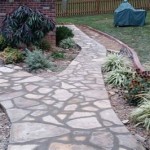Patio Floor Tile: A Comprehensive Guide to Selection and Installation
Patio floor tile represents a durable and aesthetically pleasing option for enhancing outdoor living spaces. The selection of appropriate tile necessitates careful consideration of several factors, including material, durability, climate, style, and budget. A well-chosen and properly installed patio floor tile can significantly increase the value and usability of a property.
Understanding Different Tile Materials for Patios
The material composition of patio floor tile significantly influences its performance and longevity. Several common materials are employed, each possessing unique characteristics that make them suitable for different applications and climates. These materials include: ceramic, porcelain, natural stone (such as slate, travertine, and limestone), concrete, and various composite materials.
Ceramic tile is manufactured from clay and fired at high temperatures. It is generally more affordable than other options and is available in a wide range of colors and patterns. However, standard ceramic tile is often porous and susceptible to cracking in freezing temperatures. For patio applications, it is crucial to select ceramic tile that is rated for outdoor use and exhibits sufficient frost resistance.
Porcelain tile is also made from clay but is fired at even higher temperatures than ceramic tile, resulting in a denser and less porous material. This inherent density makes porcelain tile significantly more resistant to water absorption and therefore, more durable in outdoor environments, particularly those with freeze-thaw cycles. Porcelain tile is available in glazed and unglazed forms. Unglazed porcelain tile typically offers better slip resistance. The Porcelain Enamel Institute (PEI) rating system evaluates the abrasion resistance of glazed porcelain and is a useful tool for selecting appropriate tiles for high-traffic patio areas.
Natural stone tiles, such as slate, travertine, and limestone, offer a distinctive and luxurious aesthetic. Slate is a durable and naturally slip-resistant option due to its textured surface. Travertine features a porous, textured surface that provides good traction, but it requires sealing to prevent staining and water damage. Limestone offers a classic and elegant appearance but is also relatively porous and requires regular maintenance. Natural stone tiles tend to be more expensive than ceramic or porcelain options, and their installation can be more complex, often requiring specialized tools and techniques.
Concrete tiles provide a robust and versatile option for patios. They can be manufactured in a variety of shapes, sizes, and colors, and can even mimic the look of natural stone. Concrete tiles are typically durable and resistant to cracking, but they can also be porous and require sealing to prevent staining. Properly installed concrete tiles can withstand heavy foot traffic and extreme weather conditions. The cost of concrete tiles can vary depending on the design and complexity of the manufacturing process.
Composite tiles, often made from recycled materials such as plastic and rubber, offer an environmentally friendly alternative to traditional tile materials. They are typically slip-resistant, durable, and easy to install. Composite tiles are often designed to interlock, simplifying the installation process and reducing the need for specialized tools. While they may not offer the same aesthetic appeal as natural stone or porcelain, composite tiles provide a practical and cost-effective solution for patio flooring.
When selecting a tile material, it is essential to consider the local climate. In areas with harsh winters, frost resistance is a crucial factor. Porous materials like some natural stones and certain types of ceramic tile can absorb water, which expands when frozen, leading to cracking and damage. Proper sealing can mitigate this risk, but regular maintenance is required. In hot and sunny climates, the color and reflectivity of the tile should be considered. Darker tiles can absorb more heat and become uncomfortably hot to walk on, while lighter-colored tiles reflect sunlight and remain cooler.
Essential Considerations for Patio Tile Installation
Proper installation is crucial for the longevity and performance of patio floor tile. A poorly installed tile floor can be unsightly, prone to cracking, and require costly repairs. Preparation of the subfloor, selection of appropriate setting materials, and precise tile placement are all critical steps in the installation process.
The subfloor, which is the structural base beneath the tile, must be level, stable, and properly prepared. For concrete patios, this may involve patching cracks and leveling uneven surfaces. For patios over soil, a compacted gravel base followed by a layer of sand or concrete is necessary to provide a stable foundation. Proper compaction is essential to prevent settling and cracking over time. The subfloor should be clean and free of debris before tiling begins.
The selection of appropriate setting materials, including mortar and grout, is crucial for bonding the tile to the subfloor and filling the joints between tiles. Mortar is available in various formulations, each designed for specific applications. Polymer-modified mortars are often recommended for exterior applications due to their enhanced bonding strength, flexibility, and water resistance. Thin-set mortar, a common type of mortar, is typically used for installing tiles over concrete or cement backer board. The manufacturer's instructions should be carefully followed when mixing and applying mortar.
Grout, which fills the joints between tiles, serves to prevent water penetration and maintain structural integrity. Grout is available in sanded and unsanded varieties. Sanded grout is typically used for joints wider than 1/8 inch, while unsanded grout is used for narrower joints. Epoxy grout offers superior water resistance and stain resistance compared to cement-based grout but is more expensive and can be more difficult to install. Sealing grout after installation is recommended to further protect it from water damage and staining.
Tile placement requires careful planning and execution. Starting with a layout plan helps to ensure that tiles are evenly spaced and that cuts are minimized. Using tile spacers ensures consistent joint widths. Tiles should be pressed firmly into the mortar bed to ensure proper adhesion. A rubber mallet can be used to gently tap tiles into place. Excess mortar should be cleaned from the tile surface immediately after installation. The mortar and grout must be allowed to cure fully before the patio is subjected to heavy foot traffic.
Proper drainage is a fundamental consideration during patio tile installation. The patio should be sloped slightly away from the house to prevent water from pooling and causing damage. Incorporating a drainage system, such as a French drain or a surface drain, can further enhance water management. Adequate drainage helps to prevent erosion, mold growth, and structural damage to the patio and surrounding areas.
Maintaining and Protecting Patio Floor Tile
Regular maintenance is essential for preserving the appearance and extending the lifespan of patio floor tile. Routine cleaning, sealing, and prompt repair of any damage can help to prevent costly repairs and ensure that the patio remains an attractive and functional outdoor space.
Routine cleaning involves sweeping or vacuuming the patio regularly to remove dirt, leaves, and other debris. A mild detergent and water can be used to clean the tile surface. Avoid using harsh chemicals or abrasive cleaners, as these can damage the tile or grout. Power washing can be used to remove stubborn stains or mildew, but caution should be exercised to avoid damaging the grout or tile surface. The pressure should be adjusted appropriately, and a wide-angle nozzle should be used to prevent concentrated force on individual tiles.
Sealing tile and grout provides a protective barrier against water penetration, staining, and mildew growth. The frequency of sealing depends on the type of tile and grout, as well as the level of exposure to the elements. Natural stone tiles and porous materials like grout often require more frequent sealing than porcelain or dense ceramic tiles. Penetrating sealers are designed to penetrate the surface of the tile and grout, providing long-lasting protection. Surface sealers create a protective film on the surface of the tile but may require more frequent application.
Prompt repair of any damage, such as cracks or loose tiles, is crucial for preventing further deterioration. Cracks can allow water to penetrate the subfloor, leading to more extensive damage. Loose tiles can create tripping hazards and compromise the structural integrity of the patio. Replacing damaged tiles or repairing cracks promptly can help to prevent costly repairs in the long run. When replacing tiles, it is important to match the existing tile as closely as possible in terms of color, size, and texture.
Protecting patio floor tile from extreme weather conditions can also extend its lifespan. In areas with harsh winters, covering the patio with a tarp or snow barrier can help to prevent damage from freeze-thaw cycles. In hot and sunny climates, providing shade can help to prevent the tile from overheating and fading. Using outdoor rugs or mats can protect the tile surface from scratches and stains.
Choosing the right cleaning products is vital for maintaining the integrity of patio floor tile. Avoid using acidic cleaners, such as vinegar or lemon juice, on natural stone tiles, as these can etch the surface. Always test cleaning products in an inconspicuous area before applying them to the entire patio. Follow the manufacturer's instructions carefully when using any cleaning product or sealer.

Nordic Medium Grey Matt Stone Effect Porcelain Outdoor Floor Tile Pack Of 2 L 600mm W Diy At B Q

Outdoor Porcelain Tiles And Floor

Beige 60cm X Porcelain Patio Tiles The Outdoor Look

Patio Floor Tiles What You Should Know La Tuilerie

Nordic Décor Grey Matt Geometric Stone Effect Porcelain Outdoor Floor Tile Pack Of 2 L 600mm W Diy At B Q

Modern Outdoor Floor Tiles For Gardens Patios Target

Greenwich Anthracite Marble Effect 20mm Outdoor Porcelain Tile

Biophilic Outdoor Floor Tiles Porcelain Stoneware With Stone Effect By Palli

Floors For Outdoors Floor Trends Installation

Contemporary Patio With Patterned And Textured Porcelain Floor Tile Outdoor Flooring Tiles








